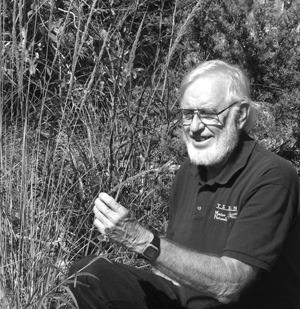Well, OK, we don’t really know what the deer “think.” I am obviously anthropomorphizing them a bit. The idea came from a blog I read written by Justin Bryan about the behavior of deer in the presence of exotic ungulates as well as some statistics about these ungulates.
Some of the statistics he cited include the fact that nearly 70% of the 200,000 exotic animals of 70 different species in Texas are in the Edwards Plateau. The most common species include axis, fallow, and sika deer, blackbuck and nilgai antelope, and aoudad sheep, and these species make up 99% of the free ranging exotics in Texas.
Most of the time when you see herbivores of different species in the same area, you notice that generally each species pretty much stays together and mostly avoids or ignores the other species. So they obviously “know” their own species and that the other species is “different.”
Where you may see some actual interactions between different species is if they are forced close together as in feeding areas or scarce waterholes. Then one species may dominate another, probably mostly based on size. Axis deer can easily drive off white-tailed deer if they want to. My personal observation is that mature male blackbuck, with their impressive horns, tend to be able to drive off white-tailed deer, but female black buck seem to give way to our native deer.
But most of the time, the different species are not necessarily in that close in proximity to other species, so any physical interaction is minimal. But that doesn’t mean that the presence of one species doesn’t affect another species, and in fact this is where the presence of one species makes a difference in the well-being of another.
As an example, most exotic ungulates eat like goats, meaning they can thrive on browse (woody plant leaves), forbs (broadleaf herbaceous plants) or grass, and therefore they compete with our usual livestock species as well as with white-tailed deer for food. This is particularly troublesome for our white-tailed deer since they cannot survive on a diet of only grass.
This was demonstrated conclusively at Kerr Wildlife Management Area when an equal number of sika deer and white-tailed deer were placed in a high-fenced pasture and left there. After a few years, the white-tailed deer had all died out, but the sika population had increased dramatically. In the beginning, both species ate a lot of browse. But when all of the browse was eaten, as well as the forbs, the sika did fine living on grass. But the white-tailed deer couldn’t survive.
So the existence of these exotics means they are in competition with both our native wildlife and, if livestock are on the same property, with livestock as well. It is essential, therefore, that the numbers of all three types of animals, livestock, native white-tailed deer, and exotics be controlled to within the carrying capacity of the land, or the health and productivity of the land and the animals will decline.
Since deer don’t eat much grass and cows don’t eat much browse, the two species can pretty much exist without any problem. (Although, when a cow comes into an area where deer are, the deer will certainly make room for her.) But goats also prefer browse, and so they eat the same thing as our native deer. That still doesn’t present a problem for the deer if there is enough browse for all the browsing animals. But if the total browser population is greater than the carrying capacity of the land for browsers, then both species will be affected, but the goats can eat grass and the white-tailed deer can’t live on only grass.
So, we don’t know what our white-tailed deer “think” about other species, whether livestock or exotics, but the existence of these non-native animals clearly affect our native deer and in many cases make for a poorer quality native habitat for them.
The effect of adding nonnative species to our native habitat can be much the same as adding that many more deer to the same habitat—if the number of mouths of consumers exceeds the capacity of the land to produce sufficient food for them, then the health of the habitat, and the animals, will decline.
Until next time… Jim Stanley is a Texas Master Naturalist and the author of the books “Hill Country Ecology,” “Hill Country Landowner’s Guide” and “A Beginner’s Handbook for Rural Texas Landowners.” He can be reached at <jstmn@ktc.com>. Previous columns can be seen at <www. hillcountrynaturalist.org>, or at Riverside Nature Center at <https://riversidenaturecenter. org/past-blogs-from-a-friend/ >.

